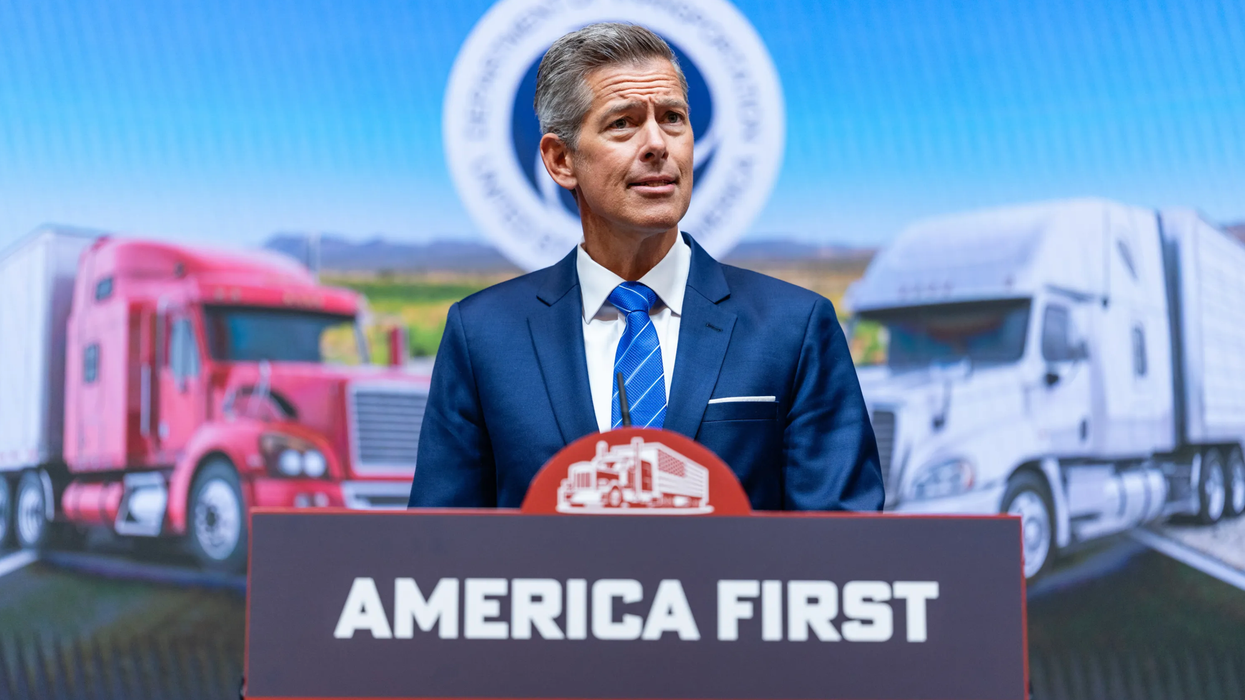Last spring and summer, The Fulcrum published a 30-part series on Project 2025. Now that Donald Trump’s second term has started, Part 2 of the series has commenced.
In August 2024, The Fulcrum published an in-depth column on the Department of the Interior, examining how the implementation of Chapter 16 of Project 2025 could dramatically alter environmental protections in the United States.
In that writing, author Kristina Becvar stated the following:
While Project 2025 presents a bold vision for the department, its potential impacts on public lands, environmental protections and Indigenous rights demand critical scrutiny. Proponents argue that these changes are necessary for economic growth and national security, but the emphasis on deregulation and resource extraction raises concerns about long-term sustainability and the balance between economic development and conservation. As voters and policymakers consider these proposals, it is essential to weigh the long-term consequences for America's natural heritage and the principles of conservation that have guided the DOI for over a century.
Becvar elaborated on the broader ideological debate over the government's role in managing natural resources and protecting the environment, emphasizing the high stakes for America's public lands and natural heritage—issues that could shape the nation's environmental and energy policies for years to come.
Just over 100 days into Trump's second term, several of his executive orders have targeted policies related to the Department of the Interior—many aligning with Project 2025 recommendations and highlighting the risks Becvar warned about last August.
One striking example is the executive order to increase oil leases on the Outer Continental Shelf (OCS). This order expedited permitting for energy and mineral projects on federal lands and aligns with Project 2025’s emphasis on boosting domestic energy production and reducing regulatory barriers.
The OCS refers to the submerged land beyond state jurisdiction but is within U.S. federal control. It extends from the coastline to about 200 nautical miles offshore, covering regions in the Gulf of Mexico, Atlantic, Pacific, and Alaska. The potential environmental risks of increasing oil leases in this protected area are significant.
Expanding oil leases on the Outer Continental Shelf poses several environmental risks, including:
- Oil Spills & Pollution: Increased drilling raises the likelihood of oil spills, which can devastate marine ecosystems and coastal communities.
- Habitat Destruction: Offshore drilling disrupts seabed habitats, affecting marine life such as corals, fish, and other organisms.
- Air & Water Pollution: Drilling operations release pollutants into the air and water, contributing to climate change and harming marine biodiversity.
- Seismic Activity & Noise Pollution: Exploration methods like seismic blasting can disturb marine mammals, including whales and dolphins.
- Carbon Emissions: Expanding fossil fuel extraction contradicts climate goals, increasing greenhouse gas emissions.
While the risks could be mitigated with careful oversight and responsible lease management, the administration’s 'drill baby drill' approach casts doubt on its commitment to environmental protection—especially in light of the tone and substance of Chapter 16 of Project 2025.
Additionally, President Trump's executive order has implemented emergency permitting procedures to fast-track the development of domestic energy resources and critical minerals, reducing approval timelines from several years to just 28 days. These actions once again align with Project 2025’s broader goals of deregulation, energy independence, and streamlining federal processes.
While the goal of energy independence is commendable, it must be pursued with careful consideration of environmental risks. Many worry that a permitting timeline once measured in years and is now just 28 days will make adequate risk assessment impossible. Striking the right balance is crucial—one that allows for thorough evaluations to prevent unforeseen environmental consequences. While years-long reviews may be excessive, a three to six-month period would provide sufficient time to analyze pollution levels, habitat disruption, water contamination, and other potential harms.
Environmental groups in affected communities are already investigating the efficacy of filing lawsuits against projects that bypass standard regulatory scrutiny, leading to delays and uncertainty.
Several lawsuits have already been filed in response to Trump’s executive order revoking protections for millions of acres of ocean territory, opening them up for oil and gas drilling. Earthjustice has challenged the offshore drilling plan, arguing that the order violates federal environmental laws and threatens coastal communities.
Additional legal actions have been brought by organizations such as Oceana, Greenpeace, and the Sierra Club, contesting the administration’s efforts to reverse offshore drilling bans. These groups argue that the rollback contradicts previous legal rulings and poses serious risks to marine ecosystems.
Another lawsuit seeks to reinstate protections for the Arctic Ocean and portions of the Atlantic that were previously safeguarded under the Outer Continental Shelf Lands Act. The plaintiffs claim that Trump’s order exceeds presidential authority and violates established environmental policies.
Undoubtedly, this marks the beginning of a contentious legal battle over the implementation of Project 2025’s recommendations, which seek to radically reshape U.S. environmental policies.
Concerns raised in August have now taken on greater urgency following Trump’s executive actions. The administration’s approach to these issues will have lasting effects, shaping the nation’s environmental and energy policies for years to come.
David Nevins is co-publisher of The Fulcrum and co-founder and board chairman of the Bridge Alliance Education Fund.




















